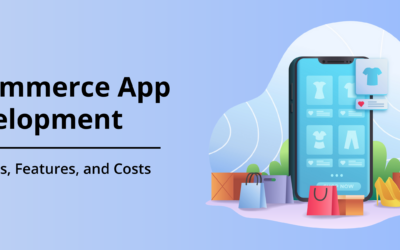Summary of the Article
Have a project in mind?
Schedule a Call5 Reasons why customer are leaving your mobile app
Summary of the Article
Downloading and uninstalling an app is so common nowadays that mobile users keep doing it all the time.
On average, a user spends 3 hours per day on his/her mobile device with 86% of the time interacting with the apps.
Given the huge variety of similar mobile apps available in the market, users don’t think much before leaving one app and trying another.
If any app falls short of the expectations of the users and can’t compete with the other apps, they simply get uninstalled.
Customer Churn is the biggest enemy of any business.
In such a competitive situation most of the popular apps try to be at the top of newer updates almost every week.
So launching an application and getting a huge number of the download doesn’t ensure that your app will continue collecting revenues. Your app can go out of use very soon unless you always keep bringing new features to satisfy the users.
There are many reasons for leaving an app. In the following article, we show you the top 5 reasons that engaged users to leave your mobile application –
Why Customers Leave your Mobile App
-
Boring Content
Most of the apps are avid ones by users because their content has become boring for users.
Unless your app is something people use a lot, for example, Facebook or Instagram, users can get bored with the same features of an app after a week to about a month.
For you to engage your users and attract new you have to keep bringing changes and unique features to your app. Even giants like Facebook and Instagram keep introducing new things to keep users interested in their app.
You can have new activities on your app like any contest, new features, sales, etc. to make people use it. Your users will open your app every day if they know that the app will have fresh prospects each day.
-
Confusing Interface
A lot of users install an app because they’ve been attracted by the description or have been recommended by someone. But as soon as they install and open the app, the confusing interface totally turns them down.
If a person is stuck in figuring how the app works, they will never get around to enjoying its features.
Some apps have a really long process like logging in, setting this and that, add to that low network connectivity and you can be sure about losing 70% of your users.
This problem should be solved in the testing process, where you have to ask people about how they feel about the starting process, etc. so that you can modify it to make the interface easier and more enjoyable for your users.
-
No Feedback Option
Most apps these days have incorporated the feedback option into their interface to ensure that they get direct information about the pros and cons of the app.
Instead of relying on statistical data, it’s best if you can get a rating or some comments from the real-time users.
Most good apps ask their customers for rating on a weekly or monthly basis to ensure that their app is still being liked by users. Whenever they start getting complaints, they make improvements.
Feedback ensures that you get to know what your users want more from the app, which you can introduce in updates later.
If you let your users have an opinion and modify the app according to them, the reasons for leaving application diminishes and you retain your users.
-
No Loyalty Programs or Reward Systems
It’s important to recall that at the other end of the screen, there is a customer who has a constrained amount of time, assets, and enthusiasm to spread crosswise his daily tasks, including how they engage with their smartphones.
If you aren’t compensating clients for investing valuable measures of energy and enthusiasm on your application, rest guaranteed one of your rivals will.
Prizes and loyalty programs are a brisk method to state “thank you” to your most dynamic and engaged customers, and they don’t even cost that much to implement.
Try not to let the “sunk cost” idea of rewards trick you into expelling them from your strategy.
Ordinarily, what you spend on rewards and promoting loyalty programs pays profits later on!
The best way to strategize the Loyalty program is to put yourself in the customer’s shoes. It is much easy to select the prizes and rewards that will encourage your customers to come back on your Mobile app and will keep them engaged.
-
Poorly Targeted Notification System
The idea of “correct place, an opportune time, ideal individual” is the foundation of the notifications success.
For instance – If a client finishes an event that plainly demonstrates dissatisfaction or torment, it’s most likely not the best time to request that they rate the application.
Or maybe, it’s a decent time to provoke them to send you a message so you can help take care of their concern.
Gathering client criticism and notion is tied in with timing, and if the planning for your notification is poor, the reaction will be surprisingly more terrible: The clients won’t return.
Set up your notice triggers to be smart as opposed to haphazardly set.
So as to settle on data-driven choices, take a gander at how clients are right now engaging with your application and pinpoint the areas the majority of them take off.
Once you’ve comprehended where the exits are occurring, you can better see how to smooth the procedure and reduce torment through either moving the notification to another place, or by refreshing the content in the notification to be more useful.
Conclusion
Whether you are a small business owner or an enterprise, it is very important to retain your existing customers as attracting new customers costs 7X the amount it does to retain an existing one.
Moreover, your existing customers are more likely to buy from you in comparison to a new customer.
Customer Retention and customer loyalty is the biggest factor in running your app successfully. Survey results show that 73% of the satisfied customers will recommend your service to others and their positive reviews will influence more people than your own marketing message.
Our Mobile App Development Services will help you with user research, target persona study, competition review, requirement analysis, and technical feasibility to validate your business idea and scope for adoption.










